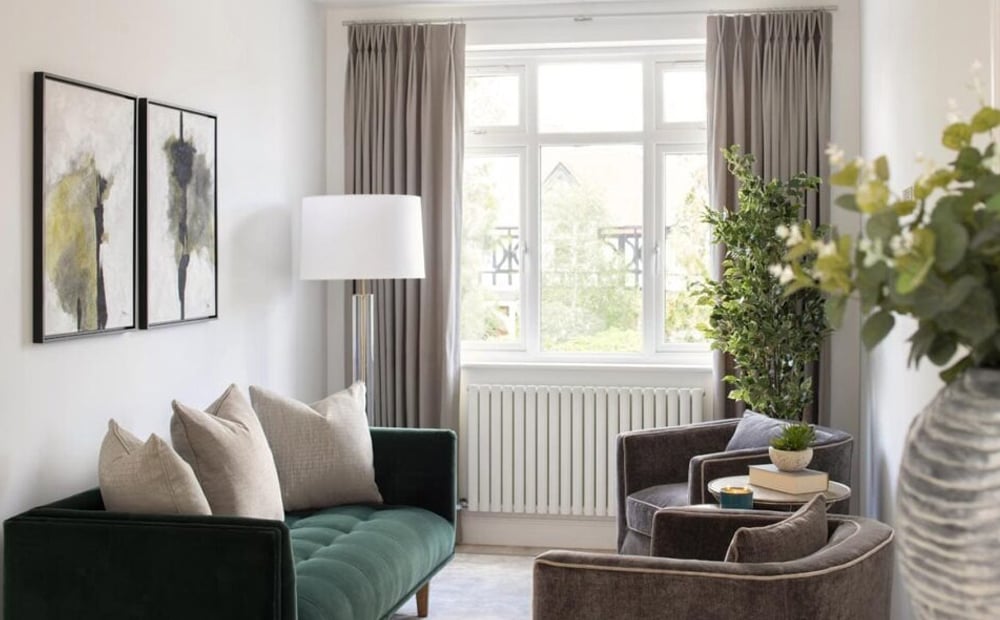As environmental issues gain global attention, the significance of biophilic design and its nuances have been propelled into the spotlight. At Moretti Interior Design, we are established proponents of this movement, incorporating natural elements de rigueur in our interior design projects and within our services. Our mission is to use design, lighting and sound, and to utilise the attributes of nature, to elevate the entire property. We showcase design, from living room interior design through to bedroom interior design, in a holistic way, increasing clients’ connectivity to the natural environment and therefore enhancing their wellbeing.

Originating from the Greek work ‘philia’ meaning ‘love of’, biophilia is defined by the Oxford English Dictionary as ‘a love of or empathy with the natural world, especially when seen as a human instinct.’ First introduced by psychoanalyst Erich Fromm in the 1970s, the concept was further explored by renowned Harvard sociobiologist Edward O Wilson a decade later when it became more prevalent.
Biophilic design has since evolved to recognise our symbiotic relationship with nature and our need to connect and immerse ourselves in it. This practice of designing spaces that have increased connectivity to the natural world is particularly beneficial because it induces a calming and positive effect. Biophilic design has now emerged as an important influence in the interior design world.


Studies have demonstrated the natural environment’s enormously positive impact on our health, productivity, and intellectual and emotional wellbeing. Not only are biophilic architecture and biophilic interior design aesthetically pleasing, but they provide an enormous range of physical and psychological benefits. By 2021, over 84 per cent of the UK population was urbanised, moving further away from nature. The stresses of modern life are exacerbated by urban surroundings, with people spending around 90 per cent of their time indoors, usually in front of a screen. Our working and home environment has never been more important.


Light is one of the key principle of biophilic design, and maximising it is essential for good health. Our homes should be infused with as much natural light as possible as the endogenous biological clock that regulates our sleep/wake cycle is aligned to light changes in our environment, affecting our physical, mental and behavioural wellbeing. Maximising natural light is at the core of biophilic interior design, and this can be achieved by embracing floor-to-ceiling windows, rooflights, sheer curtains and mirrors.
Equally as important is a lighting system that encompasses good-quality artificial light. Cutting-edge LED technology can replicate natural light, connecting people to the outdoor environment, while a biophilic aesthetic can be achieved with organic curved lighting designs, silhouettes that resemble shapes found in nature, and lights created from materials such as glass or wood.
At Moretti Interior Design, lighting is at the forefront of our creative processes. We consider ourselves masters in the art of creating bespoke lighting systems that furnish the client’s needs while incorporating biophilic principles.

Plants, with their enriching effects, are an integral element of biophilic design. Not only do they improve the air, remove toxins and regulate room temperature, but they also enhance acoustic comfort, boosting the feeling of wellbeing. One of the most obvious and cost-effective ways of greenifying your interior is to introduce house plants. Studies suggest a little over a tenth indoor plant coverage indoors is the optimum level to harness the maximum benefit. However, bona fide biophilic design requires expert knowledge to emulate a natural, restorative environment.
As specialists in the field, our expertise is in indoor plant placement, and we are skilled at mixing heights and textures, and arranging plants in effective clusters or individually to emulate nature. As well as being experts on potted plants, we are also adept with hanging plants and living walls, evoking effective results and statement aesthetic appeal. Outdoor living walls also have the additional benefit that they enhance and stimulate bio diversity.
Because multi-sensory stimuli is integral to biophilic design with scent as important as sight, the aroma of plants and flowers plays a key role too. A similar phenomenon can be elicited in the home by infusing the interior with natural scents, such as subtle room fragrances. Other biophilic plant-related elements that can be beneficial are nature-inspired art and botanical motifs.

Incorporating home water features to enhance the connection to nature is another tangible biophilic design benefit. The sight and sound of water have calming and soothing qualities that are proven to counter stress and benefit health. Flowing water, in particular, is an element that our bodies are designed to respond to.
Water can be transformative in a home and we at Moretti Interior Design are experts at finding customised creative solutions, including water wall cascades, indoor water walls or custom rain curtains, as well as fountains. Where space is at a premium, aquariums or indoor water gardens/water terrariums are appropriate alternatives. In addition, we can offer solutions that simulate a therapeutic water-inspired experience, including LED technology.

Natural materials epitomise biophilic design and are perfect for invoking a sense of being at one with nature. Injecting an additional sensory experience with their tactility, natural materials offer sustainability too. Warm and durable, they age well and are imbued with qualities that synthetic materials often lack, bringing authenticity and honesty to a scheme. Wood can easily be introduced with furniture, shelving, doors and windows, and even cladding on walls or ceilings.
Natural fabrics such as cotton, wool, silk and linen make for alluring soft furnishings, bedding and upholstery, while natural stone on floors, splashbacks and countertops elicit a sumptuous feel.
We’d be delighted to discuss how we can assist with your interiors project.
Get in touch via email, phone, or book a discovery call.
info@morettiinteriordesign.com
020 3865 2513
The Barley Mow Centre
10 Barley Mow Passage,
London, W4 4PH
